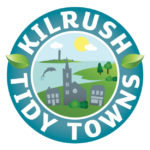Kilrush Today
Kilrush is at the centre of the rich and diverse coastal landscape of the West Clare Peninsula – at the mouth of the river Shannon and situated on the successful ‘Wild Atlantic Way’ tourist route. The designation of Kilrush as a Heritage town recognises its legacy as a landlord estate town with a rich maritime tradition – its impressive built environment has been well preserved so that it is a joy to explore the town itself with its impressive architecture. Beautiful beaches and an unspoilt natural environment surround the area. Kilrush is a perfect base for exploring the dramatic West Clare coast and visitor attractions.
Kilrush – A brief history
Cill Rois, meaning “Church of the Woods”, Kilrush has existed since the 16th Century but did not undergo any major development until the 18th century. This was primarily due to the arrival of the Vandeleur landlord family, who designed the layout of the town. Many of the present day street names derive from Vandeleur family names.
John Ormsby Vandeleur built the large family home, Kilrush House in 1808. He owned much of Kilrush and developed the town with the assistance of Scots businessman James Paterson. Paterson got involved in the oats trade and erected a six-storey building in the town, with the assistance of the Vandeleurs. He later went into the shipping business and by 1817 he had a steamboat operating regularly between Limerick and Kilrush. The increasing popularity of Kilkee as a bathing resort brought many visitors to Kilrush.
By the 1830’s, Kilrush was a busy seaport, market and post town. Branches of the national and agricultural banks had been opened in the town and a constabulary police force was also stationed there. A small prison was built in 1825 and a court house in 1831.
However the famine (1845–1849) brought much hardship to Kilrush. Famine, evictions, fever and cholera reduced the population of south-west Clare to such an extent that it never again attained its pre-famine numbers. The Kilrush workhouse witnessed terrible deprivation and deaths. Kilrush commercially survived the setbacks of the Great Famine to a great extent as a result of the arrival of the West Clare Railway towards the end of the 19th century, developed into a bustling market town.
There is a 1500 year old monastic settlement at Scattery Island in the Shannon estuary which is about 15 minutes from Kilrush by boat. The settlement was founded by St. Senan. It features one of the oldest and tallest round towers in Ireland.
